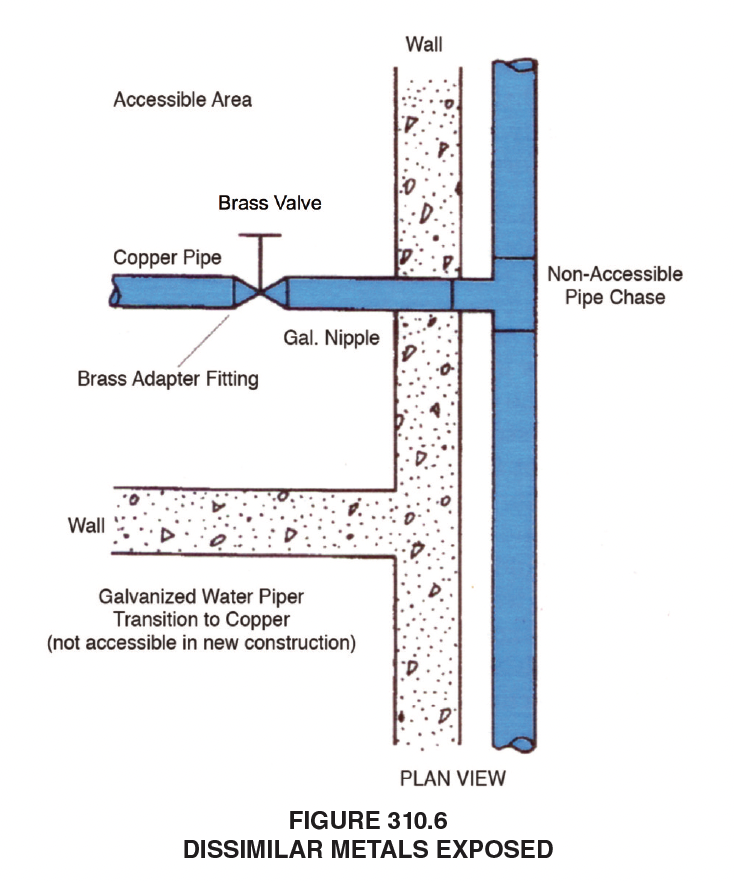April 13, 2023

310.6 Dissimilar Metals. Except for necessary valves, where intermembering or mixing of dissimilar metals occurs, the point of connection shall be confined to exposed or accessible locations.
Historically, mixing of metals in drainage systems has not been a problem, as evidenced by the traditional commingling of lead, tin, copper, brass and ferrous metals in the manufacturing and installation of traps, ferrules, cleanouts, drains, caulked and wiped joints, and so forth. There is, however, a concern when mixing dissimilar metals, such as copper and steel piping, in a water system. The connection creates the possibility of galvanic action occurring, which could cause corrosion of the system and leaks.
Galvanic action occurs because the difference in electrical potential between the two metals will always cause flow from the anode to the cathode when there is an electrolyte to facilitate this flow. In the case of connections between steel and copper water pipe, the steel becomes the anode, the copper becomes the cathode and the water serves as an electrolyte in this process of ionic transfer. The steel pipe sacrifices itself to the electrolytic process, eventually resulting in pipe failure and potential property damage. For this reason the transition shall be in an exposed and accessible area so that if a problem develops it will be seen and easily repaired (See Figure 310.6).

The 2021 Uniform Plumbing Code Illustrated Training Manual is available for purchase here.
(This is not to be considered the official position of IAPMO, nor is it an official interpretation of the Codes.)
Last modified: April 13, 2023
